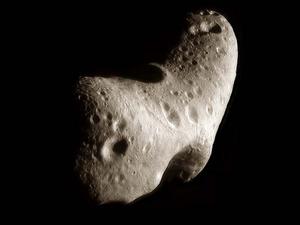I am interested in what the dialogue will be about preparing for such an unexpected, massive catastrophe like this. It is certainly not an easy task, but being prepared for something like this is essential. This article speaks to preparedness, action, and reaction; which is the framework of Homeland Security.
Planetary security Be prepared: What to do if an asteroid is heading our way
Published 19 December 2014
Last month, experts from European Space Agency’s (ESA) Space Situational Awareness (SSA) program and Europe’s national disaster response organizations met for a two-day exercise on what to do if an asteroid is ever found to be heading our way. The exercise considered the threat from an imaginary, but plausible, asteroid, initially thought to range in size from twelve meters to thirty-eight meters — spanning roughly the range between the 2013 Chelyabinsk airburst and the 1908 Tunguska event — and travelling at 12.5 km/s. Teams were challenged to decide what should happen at five critical points in time, focused on 30, 26, 5, and 3 days before and one hour after impact.
 Asteroid Eros // Source: commons.wikimedia.org
Asteroid Eros // Source: commons.wikimedia.orgLast month, experts from ESA’s Space Situational Awareness (SSA) program and Europe’s national disaster response organizations met for a two-day exercise on what to do if an asteroid is ever found to be heading our way.
In ESA’s first-ever asteroid impact exercise, they went through a countdown to an impact, practicing steps to be taken if near-Earth objects, or NEOs, of various sizes were detected.
An ESA release reports that the exercise considered the threat from an imaginary, but plausible, asteroid, initially thought to range in size from twelve m to thirty-eight meters — spanning roughly the range between the 2013 Chelyabinsk airburst and the 1908 Tunguska event — and travelling at 12.5 km/s.
Critical times to take action
Teams were challenged to decide what should happen at five critical points in time, focused on 30, 26, 5, and 3 days before and one hour after impact.
“There are a large number of variables to consider in predicting the effects and damage from any asteroid impact, making simulations such as these very complex,” says Detlef Koschny, head of NEO activities in the SSA office.
“These include the size, mass, speed, composition and impact angle. Nonetheless, this shouldn’t stop Europe from developing a comprehensive set of measures that could be taken by national civil authorities, which can be general enough to accommodate a range of possible effects.
“The first step is to study NEOs and their impact effects and understand the basic science.”
How should Europe react
Participants came from various departments and agencies of the ESA member states Germany and Switzerland, including Germany’s Federal Office of Civil Protection and Disaster Assistance. They studied questions such as: how should Europe react, who would need to know, which information would need to be distributed, and to whom?
“For example, within about three days before a predicted impact, we’d likely have relatively good estimates of the mass, size, composition and impact location,” says Gerhard Drolshagen of ESA’s NEO team.
“All of these directly affect the type of impact effects, amount of energy to be generated and hence potential reactions that civil authorities could take.”
Chelyabinsk: Injuries due to overpressure
During the 2013 Chelyabinsk event, for instance, the asteroid, with a mass of about 12,000 tons and a size of nineteen meters, hit the upper atmosphere at a shallow angle and a speed of about 18.6 km/s, exploding with the energy of 480 kilotons of TNT at an altitude of 25-30 km.
While potentially a real hazard, no injuries due to falling fragments were reported. Instead, more than 1,500 people were injured and 7,300 buildings damaged by the intense overpressure generated by the shockwave at Earth’s surface.
Many people were injured by shards of flying glass as they peered out of windows to see what was happening.
“In such a case, an appropriate warning by civil authorities would include simply telling people to stay away from windows, and remain within the strongest portions of a building, such as the cellar, similar to standard practice during tornados in the United States,” says Gerhard.
In a real strike, ESA’s role would be crucial. It will have to warn both civil protection authorities and decision-makers about the impact location and time. It would also have to share reliable scientific data, including possible impact effects, and provide trustworthy and authoritative information.
Establishing internationally coordinated procedures
The exercise ended on 25 November, a significant step forward at highlighting the unique factors in emergency planning for asteroid strikes, and possible courses of action. It also clarified a number of open points, including requirements from civil protection agencies and the type and time sequence of information that can be provided by ESA’s SSA.
It is another step in the continuing effort to set up an internationally coordinated procedure for information distribution and potential mitigation actions in case of an imminent threat.
The release notes that ESA’s NEO team is also working with international partners, agencies and organizations, including the UN, to help coordinate a global response to any future impact threat (see “Getting ready for asteroids”).
With the aim of strengthening ESA’s and Europe’s response, similar exercises will be held in the future. The next, in 2015, will include representatives from additional countries.
No comments:
Post a Comment